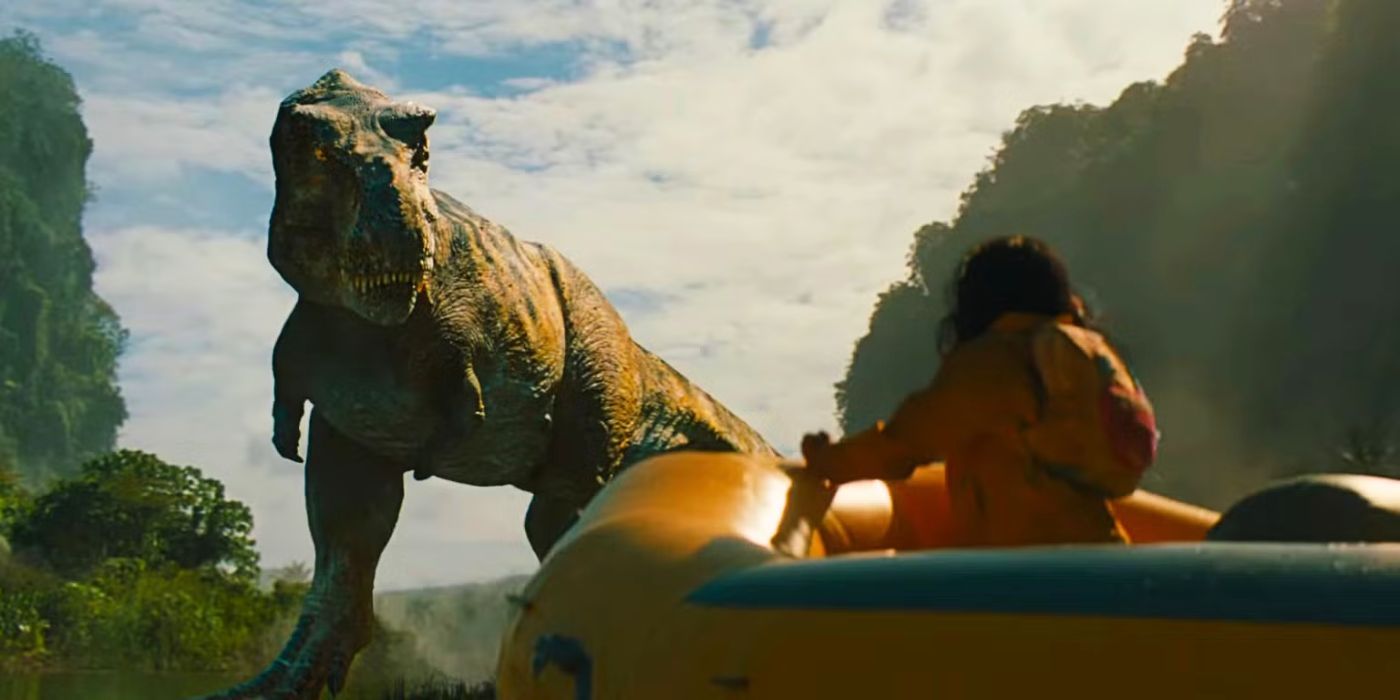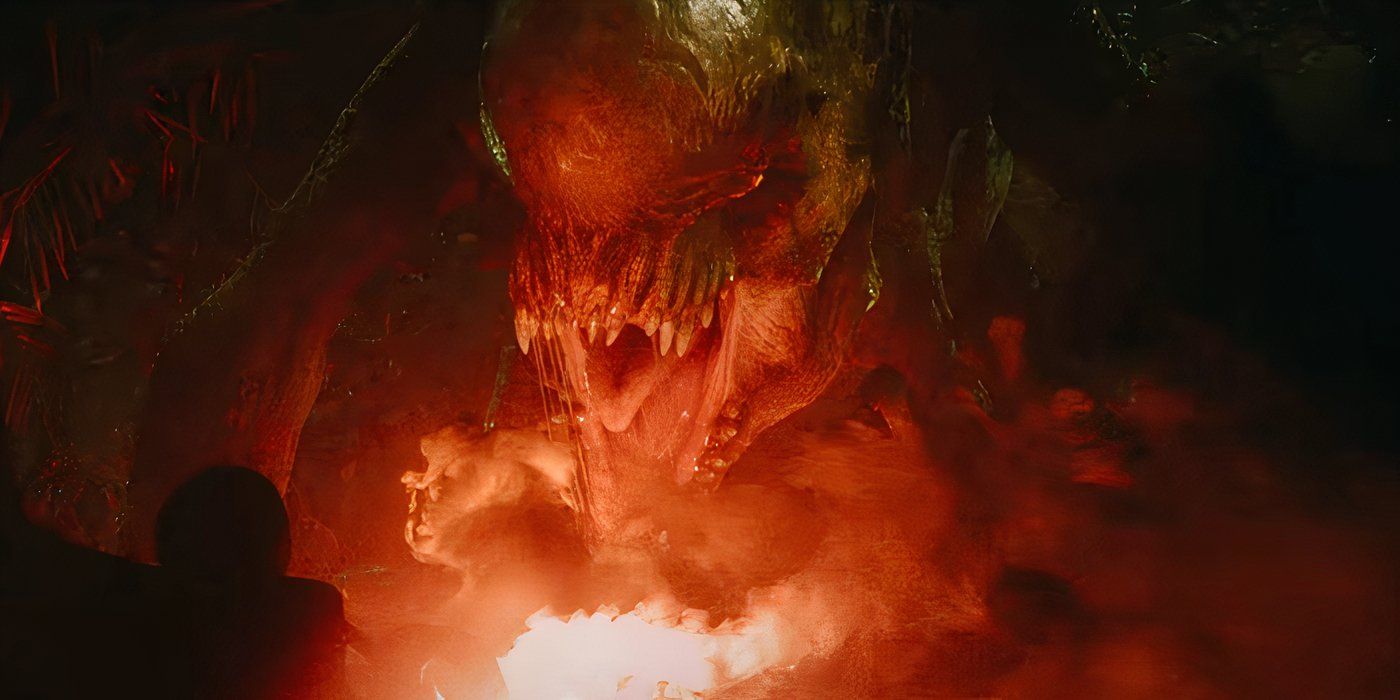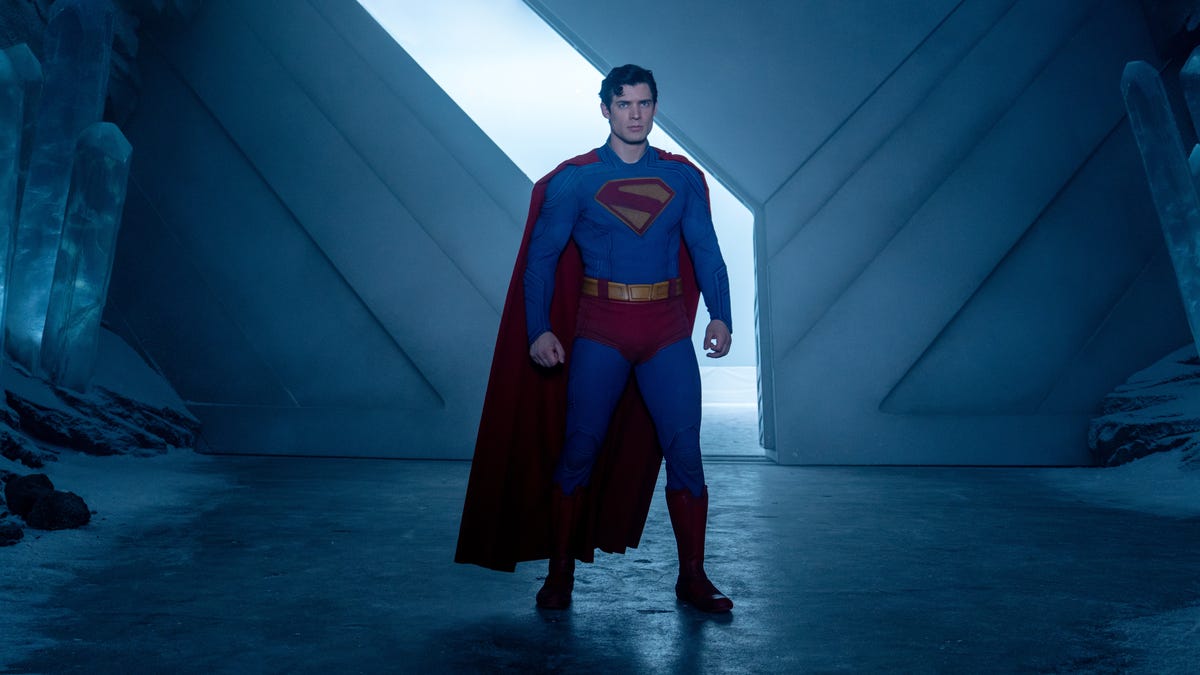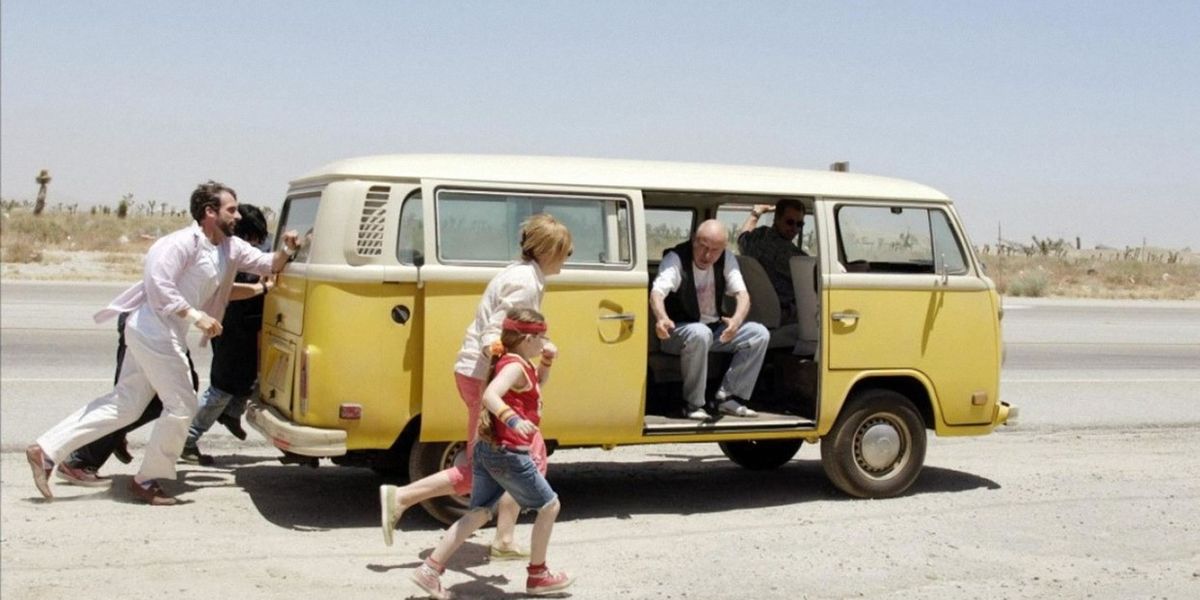I’ve spent most of my career writing about two things: movies and dinosaurs. Though I started out covering film, kindergarten me (like countless children the world over) wanted to be a paleontologist. For about five years in the pre-COVID-19 era, I got as close as anyone with a degree in creative writing reasonably could by working at a natural history museum. It was my job to translate the findings of brilliant paleontologists into programming that was enlightening and entertaining enough for the general public’s consumption… a job that wasn’t totally dissimilar from that of big dinosaur blockbusters, in theory.
The Jurassic Park movies combine my old, great loves. So, when Universal greenlit Jurassic World Rebirth, I knew I’d be there opening night, despite the fact that the franchise — if not the entire genre — seems on the brink of extinction, particularly in the wake of 2022’s confoundingly toothless Jurassic World Dominion. This seventh installment is the Edmontosaurus of dinosaur movies: it’s fine, but it’s not going to be anybody’s favorite. On a sweltering holiday weekend, fine will mean nine figures at the box office and the continued survival of the Jurassic brand. Still, it’s worth examining why these films so consistently fail to live up to their potential.
‘Jurassic World Rebirth’ Isn’t a Disaster, Just Another Disappointment
My favorite prehistoric creature feature, along with probably most of the population of Earth’s, is Jurassic Park. The 1993 original is so awesome that, like an asteroid smashing into the Yucatan Peninsula, it might’ve inadvertently killed dinosaur movies forever. That hasn’t stopped the industry from trying. But as it turns out, truly great dino flicks are as difficult to manufacture as genetically cloned Velociraptors, and there are three decades of evidence to prove it.
The six Jurassic sequels span the gamut from serviceable to perhaps knowingly campy to downright bad. Disney’s Dinosaur was visually impressive for its time, but ultimately underwhelming and forgettable. Pixar’s The Good Dinosaur was the studio’s first ever bomb. 65 squandered a promising premise and Adam Driver. Only The Land Before Time series has had any lasting impact on the culture, and still the pattern is the same. The first one is a kids’ classic; the rest had diminishing returns.
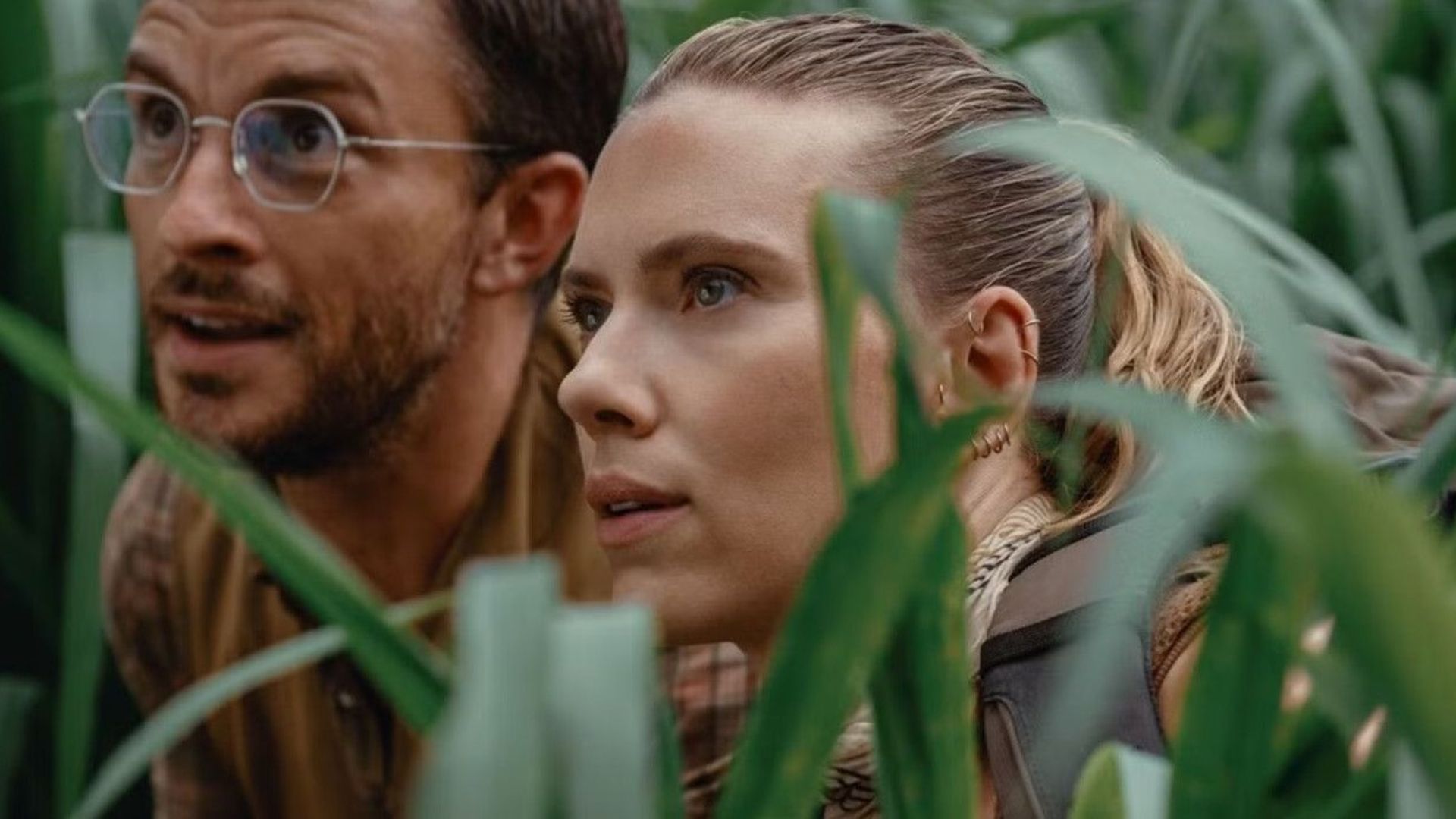
Related
How ‘Jurassic World Rebirth’ Connects to the Franchise
The latest installment is definitely a sequel, but it aims to carve its own path alongside its predecessors.
Why? Let’s approach this scientifically. All Jurassic movies share some DNA. Take an altruistic scientist or three, a shortsighted CEO type, add some children of divorce, repeatedly put them in peril, and color it all with vaguely green themes. Even 65 and some of those animated films borrow from this coding. Why did it succeed the first time with such mixed results thereafter?
Jurassic World Rebirth is an interesting case study. Though it’s the furthest removed, the original Jurassic Park feels like its closest ancestor because Rebirth references it so frequently. There are multiple clear homages to iconic scenes and cameos from fan-favorite species. Like Star Wars: The Force Awakens before it, the soft-reboot nature of Rebirth could be seen as a strength or a weakness.
This latest entry does have better bones than some of its predecessors. Its plot is more focused thanks to a script by David Koepp, who penned the first two Jurassic Park films. Its director, Gareth Edwards, excels at CGI-heavy set pieces. Its trio of stars — Scarlett Johansson, Mahershala Ali, and Jonathan Bailey — are capable actors who can flesh out thinly-developed characters. And, this seventh installment looks better than a dinosaur movie has in ages. For some viewers, Rebirth may rank as high as second or third in the series. But it’s still an imperfect copy of Jurassic Park, and it never stood a chance to be anything more or better.
Hollywood Learned the Wrong Lessons From ‘Jurassic Park’
One might assume that’s because the source material for Jurassic Park was written by Harvard med school student Michael Crichton, while the film version was directed by the legendary Steven Spielberg. One might also credit the trio of actors at its center: Sam Neill, Laura Dern, and Jeff Goldblum. The 1993 masterpiece benefits mightily from an engaging story, breathtaking practical effects, and lightning-in-a-bottle cast chemistry. But neither Crichton nor Spielberg nor any of the stars is some missing link. They were all involved in the follow-ups, too, to various extents.
A closer examination of what works and what doesn’t about Jurassic World Rebirth sheds more light on the matter. In one of the film’s most affecting moments, Bailey’s Dr. Loomis takes a break from almost being eaten to pet the ankle of a Titanosaur and weeps tears of joy. That’s as close as Jurassic World Rebirth gets to the quality of Jurassic Park, which reigns supreme because it gets dinosaurs right. Not the palenontology, exactly. Anyone who went through a dinosaur phase can tell you T. rex had feathers, Dilophosaurus didn’t have a frill, and those Velociraptors look more like Utahraptors. It understands them, and more importantly, our emotional relationship with them. Paleontologists don’t have Jurassic Park toys and posters in their offices because of its accuracy. They geek out because of how it made them feel.
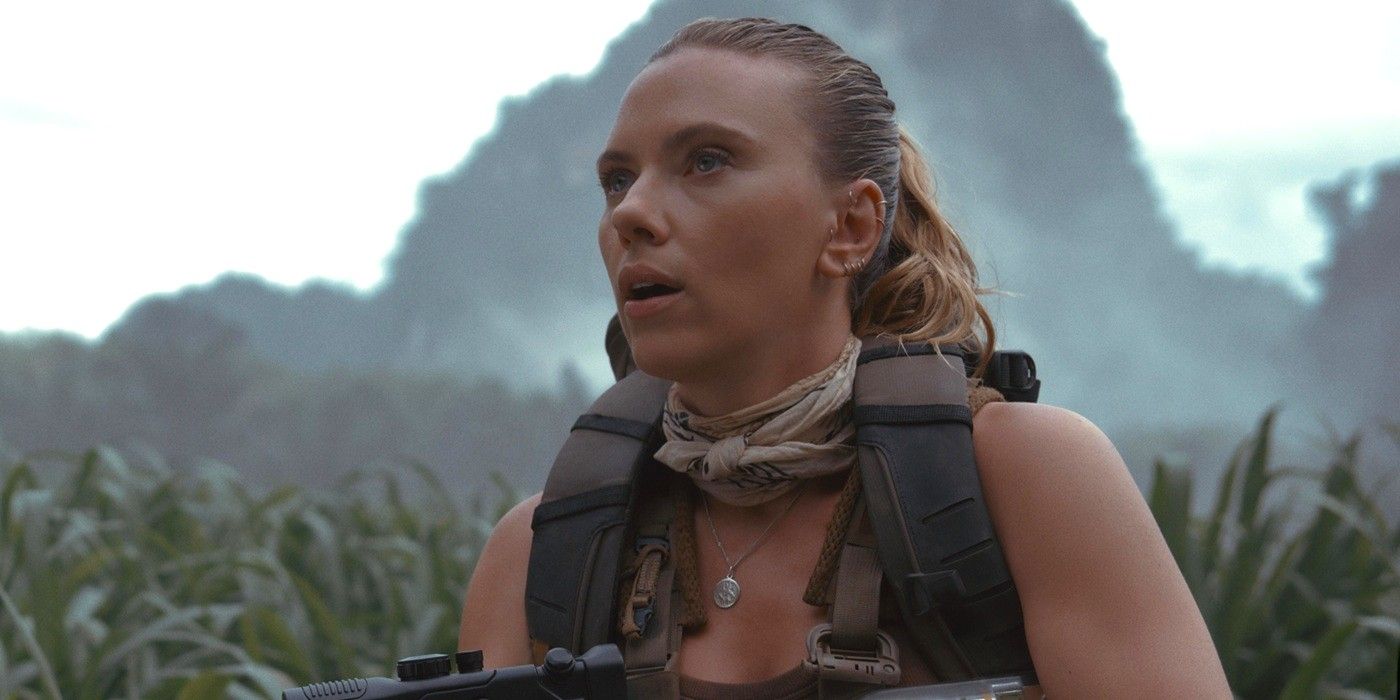
Related
‘Jurassic World Rebirth’s Original Ending Would Have Made a Major Change to One Character’s Fate
Gareth Edwards had a different (and darker) ending in mind for the latest ‘Jurassic World’ film.
Yes, the original T. rex and raptors were scary, but they weren’t necessarily villains. Unfortunately, imitators learned the wrong lessons from Jurassic Park and opted to deploy dinosaurs like Kaiju lying in wait. The problem is, dinosaurs aren’t imaginary monsters. While some mythical beasts (dragons, for example) may have their roots in the discovery of fossils, what’s most amazing about dinosaurs is that they were real. Of course, we’d all be petrified if we encountered an Allosaurus in the wild, but people — and kids especially — aren’t afraid of dinosaurs. They’re fascinated by and love them.
Jurassic Park loved dinosaurs, too. It brought them back to life and perfectly captured the terror and wonder they inspire. Plus, it had the luxury of doing it first and the combined talent to do it best. In the years since, Hollywood has failed to adapt. Banking on that bigger is better (and the wild in-world notion that regular dinosaurs are boring), the Jurassic World movies have rehashed the same basic story but with increasingly ridiculous genetically modified (and digitally-rendered) big bads — Indominus rex, Indoraptor, and now Mutadon and Distortus rex — that never existed. We don’t need old stories with fake dinosaurs. We need new stories with real dinosaurs.
I thrilled at watching Spinosaurus sails cut through the water because I love Spinosaurus, even if I know Spiny’s main function will be to kill off tertiary crew members in the first act. Nobody loves or cares about the silly, made-up D. rex. The climax of Jurassic World Rebirth represents either the franchise’s worst impulses, or, if we’re being generous, meta commentary. The film comes down hard on the side that InGen shouldn’t have played Frankenstein with these animals, and neither should’ve filmmakers. Until someone can figure out how to use these terrible, wonderful lizards to entertain and enlighten us again, there won’t be another dinosaur movie that leaves a footprint.
Jurassic World Rebirth is in theaters now.

